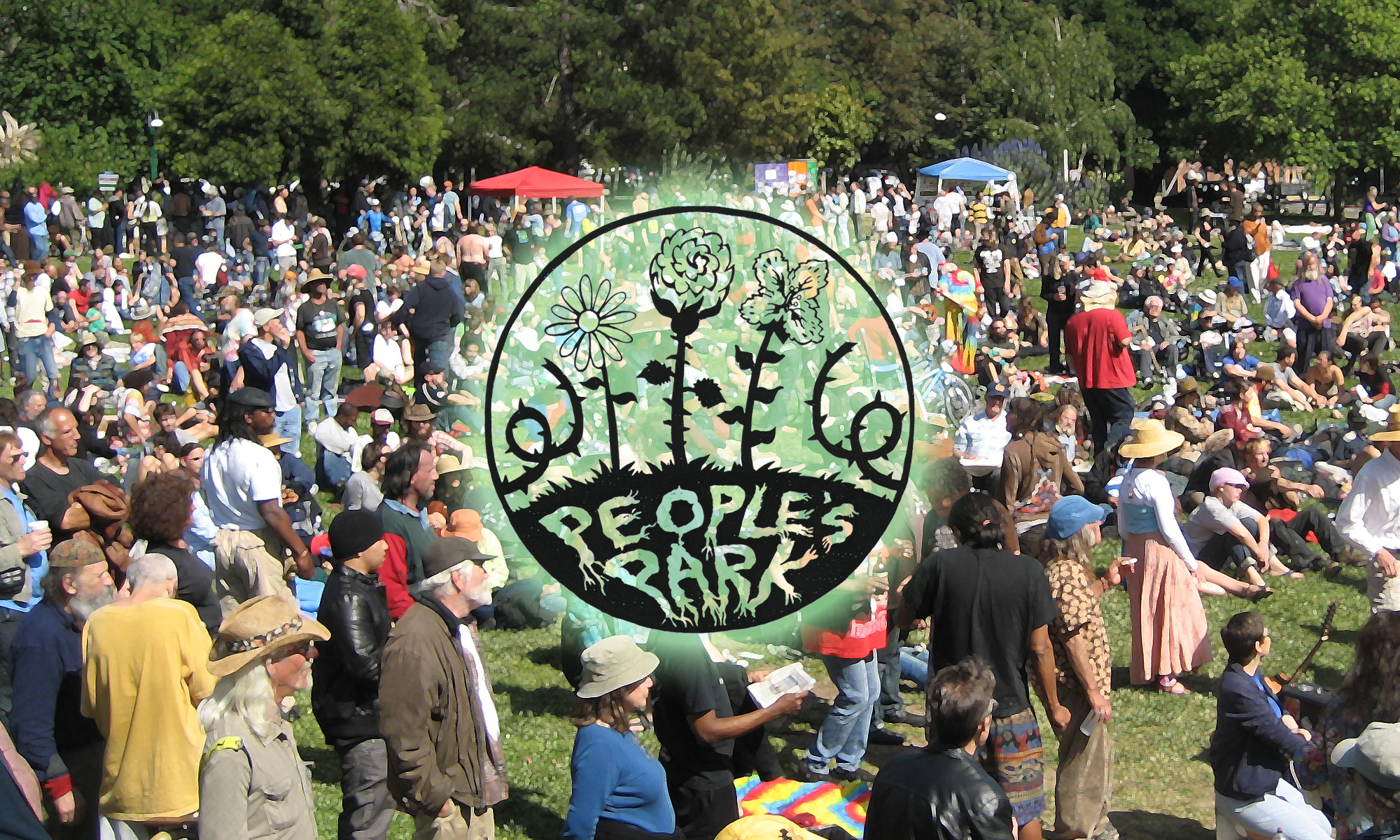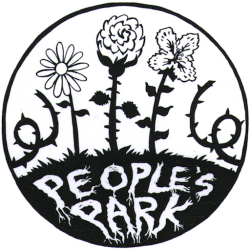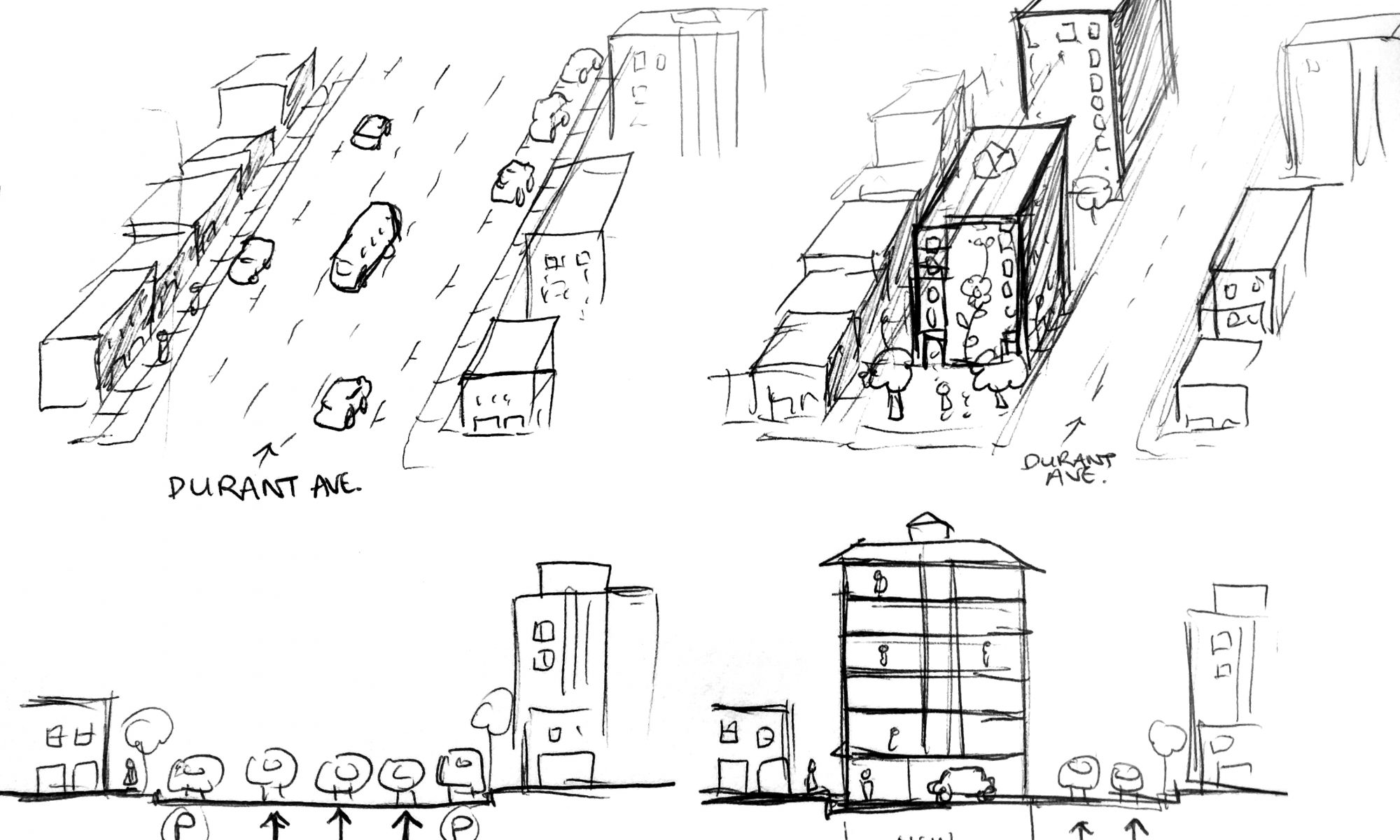Thomas Lord and Michael Delacour speak eloquently for the People’s Park on KPFA’s WorkWeek radio broadcast. The People’s Park segment begins at 11:30.
Digger truck alert… false alarm.
Okay, no problem…
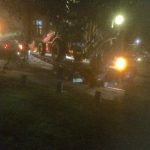 ALERT: There’s a digger truck on the curb, right outside the park right now. Attack eminent?
ALERT: There’s a digger truck on the curb, right outside the park right now. Attack eminent?
 ALERT: There’s a digger truck on the curb, right outside the park right now. Attack eminent?
ALERT: There’s a digger truck on the curb, right outside the park right now. Attack eminent?
- Friday night, 9:58 PM December 7, 2018. What’s going on? Who can check in on things and let us know? Is there an attack on the park coming? We don’t want the park damaged with unwanted development.
- Hey all, Sorry about that, seems like it was a false alarm. The digger truck had gotten temporarily stuck on the curb for a while, the truck and the digger are now gone — AZ
- I was going to bike up before sunrise and start a giant dance party right there. Igor Stravinsky Le Sacre du Printemps style with People’s Park characteristics! Should I still do it? Where can we get all night food in that neighborhood? Cast of thousands. I’m ready. I had chai! — GJ
Innovative Student Housing Architecture Can Help Protect People’s Park
by Greg Jalbert
The People’s Park community has innovative solutions to UC Berkeley’s student housing needs, as illustrated here with architectural sketches from Alfred Twu, UC Berkeley alumni.
The Durant Avenue space may get this innovative remake into new wonderfully located student housing near campus and an excellent selection of restaurants and other businesses. Let’s make Berkeley a more inviting city, protect and expand inviting green public spaces, walkable city spaces.
The Durant Avenue project remake three lanes of underused asphalt space into student housing and outdoor green park space, including some isolation barriers from traffic visual and noise pollution, outdoor dining spaces for customers of the local restaurants, cultural events and recreation. The ubiquitous waste of space by automobiles in urban architecture must be dismantled and repurposed for people, the sooner the better. Society and public space would be much better without dreary, polluted, automobile-catering dystopia.
Alfred Twu is a Berkeley designer, UC Berkeley alum, environmental advocate, and serves on Berkeley’s Zero Waste Commission. Alfred Twu put together these sketches of the plan (click images to see high resolution version).
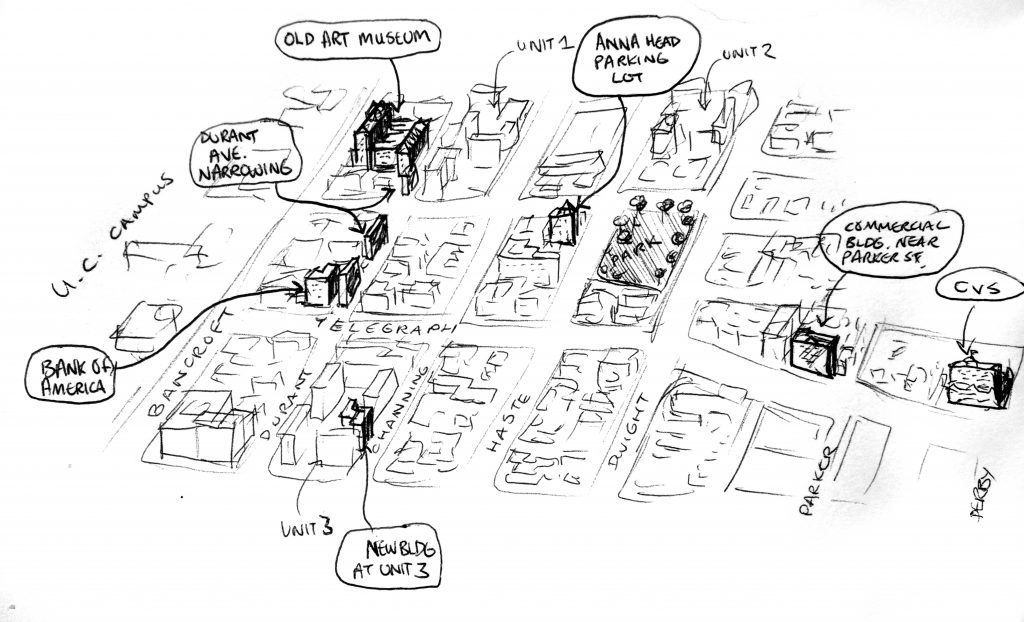
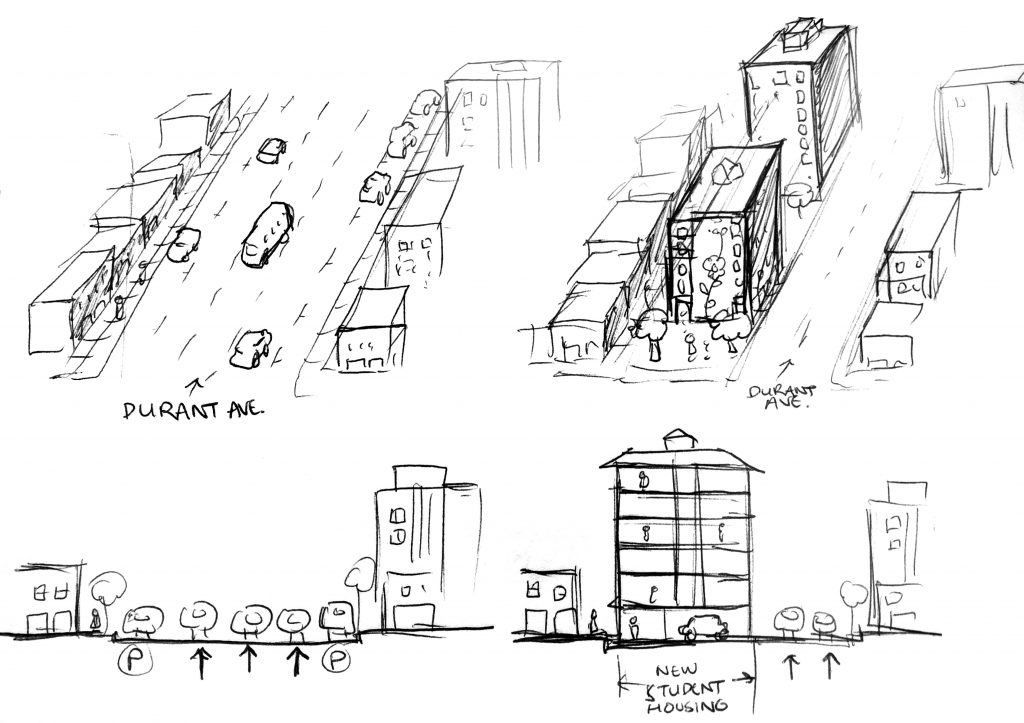
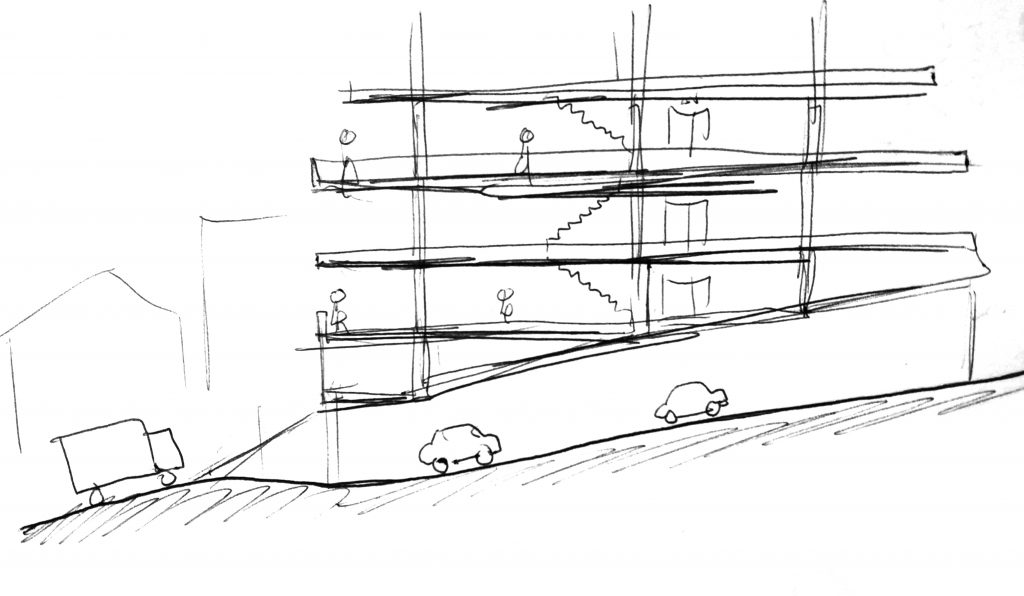
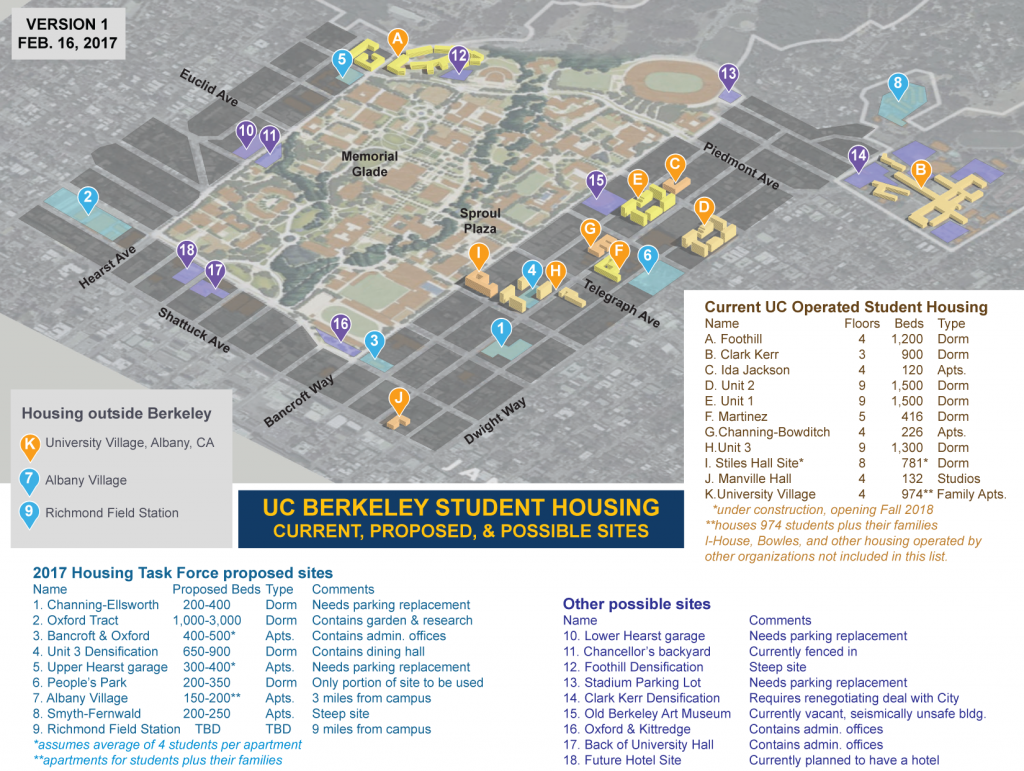
The People’s Park community opposes the UC Berkeley plan to build housing on People’s Park. Their plan removes vital, precious green space from the community. Their plan removes a community gathering place for park visitors of all kinds, neighbors, students, out of town visitors, local restaurant patrons looking for a picnic place, cultural events.
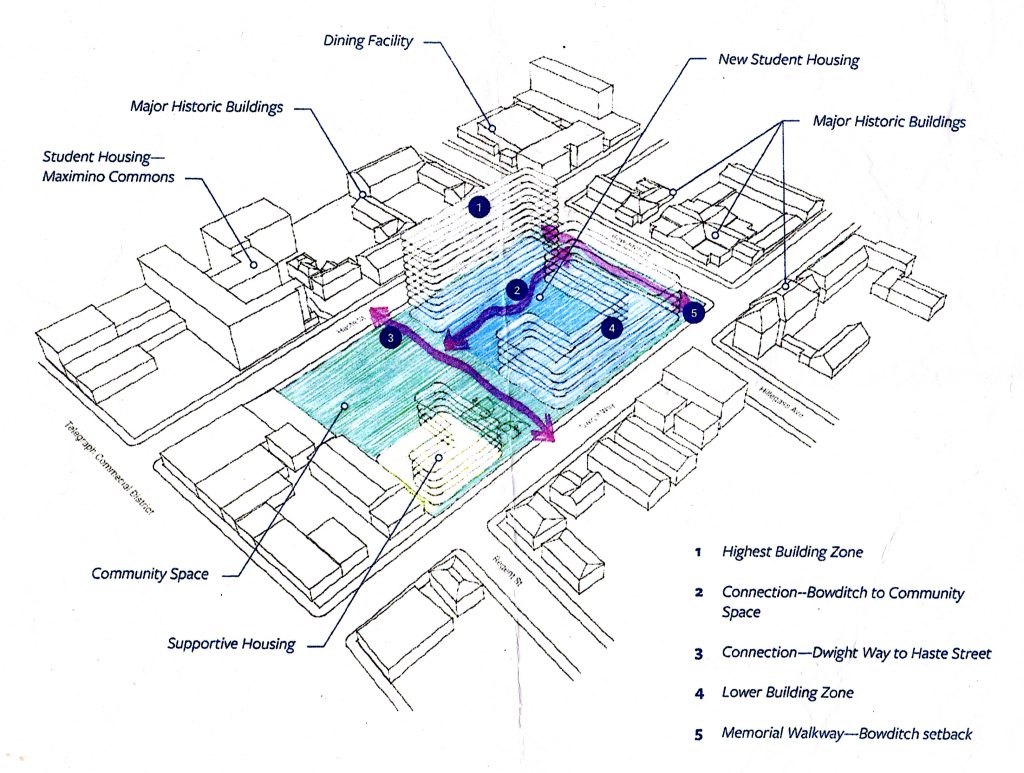
We hope the community engages together to protect People’s Park. Please, get involved. Many resources and links are available on the PeoplesPark.org site.
— Greg Jalbert is a longtime People’s Park community member, having gardened there for several years, played countless hours of acoustic music jams with other community members, and had countless hours of engaging and profound life-enhancing conversations on cultural history, civil rights and social justice, science, gardening, and advocates for the protection of and engagement with this green space.
Make the Park Better
Make the Park Better
by Sennet Williams, November 2018
Here is the campaign I would suggest:
Make alliances with student groups concerned about the housing shortage like CalPIRG and others for this solution.
1: change the language MAKE THE PARK BETTER, rather than “save the park,” because a lot of people are unhappy with the way the park is now.
2: change the name to “Tree-people’s park”.
2a: The park can be a showcase for FIGHTING GLOBAL WARMING by GROWING MORE TREES.
2b: It should NOT be part of campus. Make it state property for a tree park or city property.
3: point that it would be silly for student housing because the students do not want to surrounded by people spanging all the time, which would be the case under the proposed “plan.”
4: The proposed “plan” would make traffic/parking a lot worse on southside because students have friends and they drive her to pickup, drop off or visit.
5: The city has already asked U.C. to stop expanding in Berkeley.
6: All Cal’s new construction should be at Cal’s Richmond “field station” that has plenty of land and vacant buildings. Most of the suggested new housing will already be at Richmond.
7: For students to live in Richmond there will be a new rail transit system which is ALREADY PLANNED to be built, but it is still being kept secret from the media for legal reasons. But the plan is to start building it from Richmond to Cal. ASAP.
8: The most likely rail system, with offices at Cal’s RIchmond property is called CYBERTRAN.com, and it will solve the parking shortage because it is so much better than driving, Berkeley AND U.C will stop wasting huge fortunes building parking garages, and students will not need autos to get to class.
More immediately AC Transit is the problem for changing bus routes and not having enough buses, and that is why most students do not like to ride the bus and want to live near campus.
* Line 51 should be restored to one route instead of being split in two. (the major route to dorms, needed to reduce traffic)
* Line 6 should have the same route to campus 24 hours instead of shutting down at midnight. I believe “line 41” was 24 hours.
With these changes, many thousands of students will be happier to rent rooms in other towns with lower rent.
Btw, I have been a professional developer and I have a LONG history with Cal, but I am probably leaving the state for months very soon, possibly for years so that is why am sharing this info now.
Anyway, anyone can contact me: sennetwilliams@yahoo.com
Historic People’s Park Mural Restoration
The historic People’s Park mural on the North side of Amoeba Records is undergoing a restoration led by Osha Neumann. (Map view)
The People’s Park mural in Berkeley, California depicts the major events that took place there in the Sixties including the Free Speech Movement and the struggle for People’s Park.
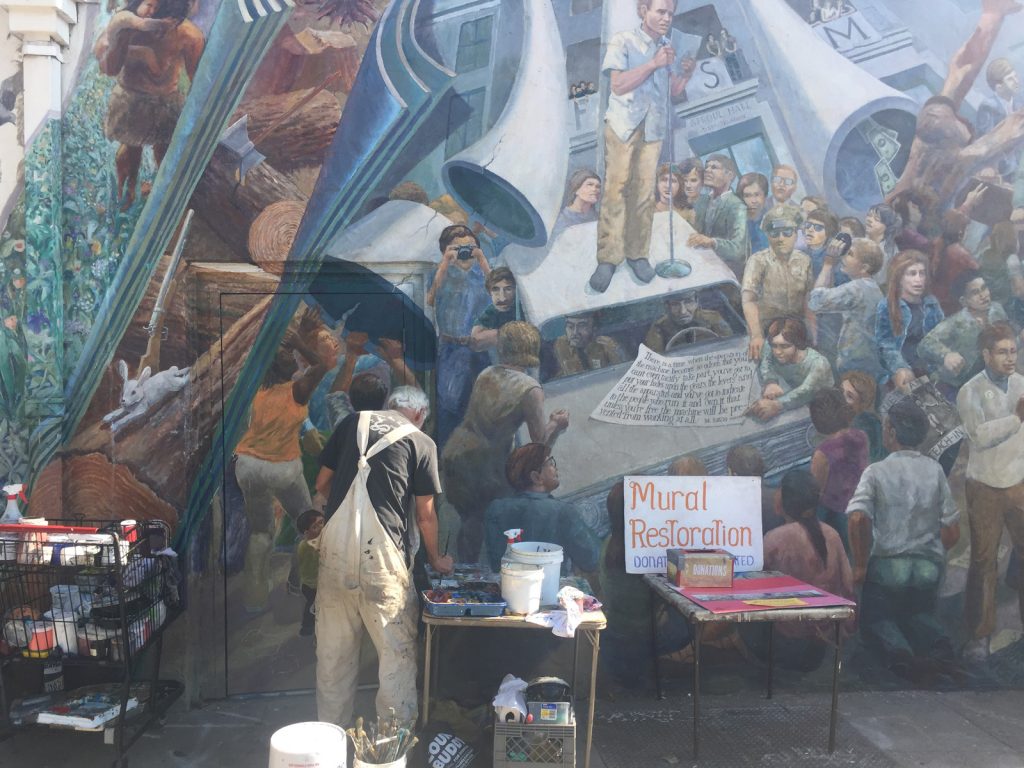
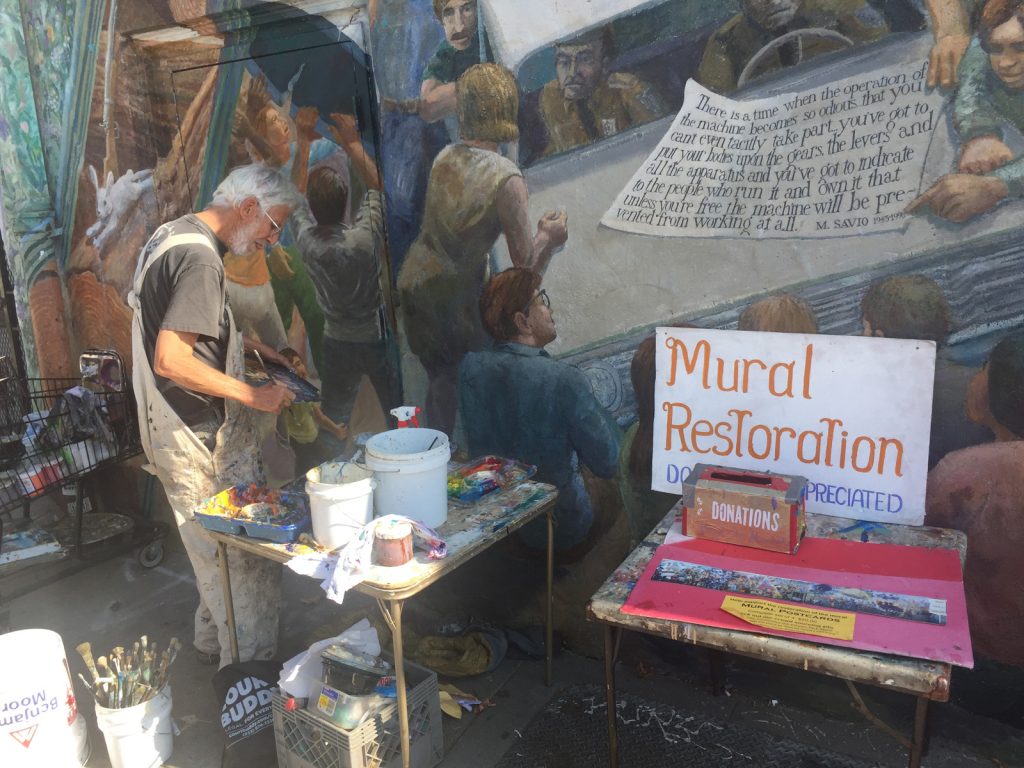
Osha Neumann is deeply engaging in his description of the important history depicted in the People’s Park Mural. (video)
Letter to Chancellor Christ
To Chancellor Christ
by Joseph Liesner
August 2018
As the 50th anniversary of the first creation of People’s Park approaches it seems you have chosen to mark that anniversary by rolling out the same deception that Chancellor Heyns used in 1969. Let me be clear: Roger Heyns did not take the 30 to 35 homes that stood on lot 1875-2, now People’s Park, by eminent domain for the purpose of building student housing, or soccer fields, and neither is the need for student housing the reason you have declared your intention to build on that lot before any of the other pieces of land upon which the University could build.
The evidence that Roger Heyns had other reasons for taking the homes of some 40 people with alarming haste and callousness is evident in the statements of faculty members, members of the Board of Regents, and the long time residents of those old homes. Professor Sim Vander Ryn, Chairman of the Chancellor’s Advisory Committee on Housing and Environment, stated “I have it on pretty good authority that this was the pitch . . . (Vice Chancellor)Cheit’s position before the Regent’s was: ‘Let’s clean up the park and get rid of the people living there who are a threat to the stability of the University’.” Regent Fred Dutton said that Heyns and Cheit had based their case for acquiring the South Campus property on the grounds that it was “. . . an act against the hippie culture.” That “hippie culture” was mentioned to many of the homeowners on lot 1875-2 by the real estate agents who were tasked with taking their homes.
In your “Summer Letter” (“California”, Summer 2018) you also propose that building on People’s Park will include housing and services for the homeless of Berkeley. Well this is quite a change for the University. I have been a volunteer with East Bay Food Not Bombs for eighteen years and know that our daily meals for the hungry, which we serve in People’s Park have faced near constant opposition by the University. We couldn’t even get the University’s permission to allow Waste Management to come into the park to pick up our compost. Other homeless advocates have tried to distribute free clothing to those in need and time after time UCB police have destroyed those free clothing sites.
So what might be the actual reasons that your mighty institution is so determined to destroy People’s Park? In 1969 South Campus was the home of the counter culture and its radical sociopolitical consciousness. For the preceeding decade the University had been locked in confrontation after confrontation with studdent groups that wanted the right to organize on campus (The Free Speech Movement), with students of color who wanted a Third World Studies College, and with students and faculty who opposed the war against Vietnam (The Vietnam Day Committee).
UCB restricted and punished students for political organizing on campus; UCB poiice beat and jailed students on strike for the creation of a Third World Studies College; and UCB, while working to crush the anti-war movement on campus supported U.S. militarism in Vietnam and used its academic cover to further Department of Defense research.
Perhaps it is time to recognize that the University of California at Berkeley was, historically, on the wrong side in each of these, above, issues and that is why the counter-culture was such a thorn in its side. Then, that very group challenged the University’s misuse of its power by appropriating the very land which the university had turned into a muddy parking lot by taking and demolishing people’s homes. The act of students, neighbors and faculty creating a beautiful park on that lot and insisting that they, the users of the land, exercise control over it began the movement for community control. Userdevelopment is the most fundamental legacy of People’s Park, and it continues to this day. People’s Park is a unique and beautiful refuge for many, especially those most abused and marginalized by our system.
As Robert Scheer summarized the situation in Ramparts (August ’69) “The Berkeley crisis was never over whether the University would be able to stop one ‘People’s Park’ but rather over whether it would succeed in what had been a long-term strategy of eliminating the culture of protest by denying it its turf”.
So, in this time where the right of dissent is threatened world wide, and the 50th anniversary of People’s Park approaches, we must remember that what Mr. Scheer refers to as the “Berkeley crisis” was marked by death and maiming, the arial tear gassing of the campus and swarths of the city, and the occupation of the City of Berkeley by the National Gurad for several weeks. Was that military attack launched on Berkeley to stop a park? Of course not, it was launched by the University of California and the State of California as a unified attempt to crush the independent, progressive political and social expression of students and citizens. Now, seeing the “Berkeley crisis” for what it was, progressive thinkers must insist on the intact preservation of People’s Park and the values for which it stands.
— Joseph Liesner
Protect People’s Park
by Ed Monroe, August 2018
Chancellor Christ has determined that Berkeley needs to double its capacity in ten years adding 7,500 beds. She states, “Whatever anyone thinks of the ideals that motivated the creation of People’s Park, it is hard to see the park as embodying those ideals. It is equally hard to determine who the people are that benefit from the park in its current form.” She says, “I have decided that People’s Park will be the first University-owned parcel to be developed and re-vitalized as we embark on our new long term effort to double the number of beds provided by the University.”
It is understandable that the chancellor finds it hard to see the park as embodying those ideals. The chancellor hasn’t been seen in the park very often.
In June 1967, the University of California acquired the land through eminent domain. In February 1968, they demolished the residences but left debris and rubble for 14 months. On April 13, 1969, activists presented a plan to local merchants and residents for developing the land into a public park. They wanted a free speech area that wasn’t controlled. On April 18, more than 100 people began building People’s Park. On May 13, Chancellor Roger W. Heyns notified the press that the university would build a fence around the property and begin construction. On May 15, a riot erupted between 4000 people
and 791 police officers, sheriffs, and highway patrolmen. Officers used teargas and buckshot. 128 people were admitted into hospitals with injuries and shotgun wounds. Student James Rector was killed. For two weeks the streets of Berkeley were patrolled by national Guardsmen. On May 23, the Berkeley faculty senate endorsed a proposal by the College of Environmental Design for People’s Park to be an experiment in community-generated design. UC students voted 12,719 to 2,175 in favor of keeping the park.
In the past 50 years there have been subsequent battles. In 1979, the university paved over what had previously been a dirt parking lot, promising that the lot would be free to everyone. A few weeks later they changed their policy to state that the lot would be for students only who would be required to pay. Then they precipitated a riot which resulted in people taking picks and shovels to remove the asphalt and convert the west end into a garden.
In December 1984 the Berkeley Landmarks Commission declared People’s Park a landmark for its historic and cultural importance to the City of Berkeley.
In 1991, the university announced its intention to build the volleyball courts. After numerous meetings and public hearings where everyone spoke out against the volleyball courts, the university built them anyway. This resulted in five years of riots that only ended when the volleyball courts were removed.
The most important ideal in the creation of People’s Park is the practice of free speech and the exercise of our Constitutional Right of Assembly. Over the last 50 years people have used the People’s Park stage for a variety of free speech events. According to Don Mitchell in “The Right to the City; Social Justice and the Fight for Public Space”, “The stage was built explicitly as a space for free speech and political action, and it has remained a center for rallies and organizing efforts in the city. In this sense, People’s Park was constructed as a public space for politics, as a place where political involvement and debate are encouraged and in a way that stood at odds with (but not disconnected from) the more orderly politics of the traditional parties, elections, council meetings, and the like.” People gather there to celebrate, protest, and share. Memorials are held there. Congresswoman Barbara Lee spoke from the People’s Park stage. Wavy Gravy hosted shows where Country Joe McDonald performed.
The World Music Fest, the Berkeley Mardi Gras, and the Hare Krishna Concert have been held in the park. Anti-war rallies, Mayday festivals, and Hip Hop shows happen on weekends in the spring and summer. During the Residence Hall Assembly Bear Fest, the park was decorated with yellow and blue balloons while students competed in games of tug-of-war, three-legged races, and pie-eating contests.
On one of their recent parades through Berkeley, flag-waving supporters of President Trump marched to the People’s Park stage to brag about the national right-wing victory, and complain about how they suffered through eight years of Obama.
When the Chinese government cracked down on the protestors in Tiennamen Square, a small group of about 20 people gathered at the stage in People’s Park that evening. There was no network. No one had called anyone else. They just showed up. Someone brought candles. They were lit in honor of brave people on the other side of the world who had sacrificed on behalf of freedom.
The problems of homelessness are ones that exist in every park in practically every city in the country. The recent self-serving tax cuts benefiting the banks, the multi-national corporations, and the rich will cause homeless camps to increase and expand. With the level of corruption in the leadership of our nation today, now more than ever people have a need to speak out.
Along with Food Not Bombs, a number of churches and student groups distribute food and other materials necessary for homeless and poor people to survive.
A variety of unique and colorful gardens have flourished under the hands of many community volunteers. A Peace Garden in honor of John Lennon and roses planted for Betsy the Dog Lady are there. The Fred Cody Redwood Grove is named for the founder of Cody’s Books. The gardens at the west end grow carrots and cucumbers, artichokes and beets. In among the greenery are daisies and clusters of pink angel trumpets. There are purple irises and yellow daffodils. “I love this park,” said Terri Compost, editor of “People’s Park, Still Blooming”, “it’s just got such a nature about it. It’s very much alive. I’ve gotten a lot from giving to this park.”
In Tom Dalzell’s opinion in Berkeleyside, May 3, he states, “The park is important open green space in an increasingly dense south campus. William Wurster was a fierce advocate of a “greenbelt of natural beauty” with no buildings around the campus. Hearst, Bancroft, Telegraph, Shattuck, and University are seeing big new buildings. As we debate the future of People’s Park, l urge that we keep in mind its unique value as a greenbelt, not just as hallowed historical ground.
“I also question the underlying assumption of the push for housing, the assumption that the university’s rapid increase in enrollment is good, necessary, and a problem that the city of Berkeley has to solve.”
To quote Lee Trampleasure’s letter of May 6, “While the open space of our parks provides us with beautiful areas to enjoy the outdoors, the very nature of this space makes it easy for those less fortunate, with little income or housing to ‘set up camp’ and, frequently trash our parks. People’s Park, not fitting in the protected category of a City of Berkeley or East Bay Regional Parks District (EBRPD) park, becomes an easy target for closure.
“There are similar problem associated with homelessness in Martin Luther King Jr. Civic Center Park but no one is going to suggest we build housing there. If we build on that lot, we will never get that open space back. | ask residents to take the long-view of development in Berkeley. As empty lots are built on and small buildings are replaced with taller buildings, the population of our city will continue to increase. We will continue to need more open space.”
— Ed Monroe, edmonroeartist@gmail.com, August 20, 2018
How much would it cost to replace the services People’s Park provides?
How much would it cost to replace the services People’s Park provides?
This is open letter to City of Berkeley Mayor and Councilmembers, and University of California at Berkeley administration, Daily Californian, Berkeley Daily Planet, and members of the Berkeley community.
As plans are being proposed to build on People’s Park, we must assess how, where and who would pay to replace the services the Park currently provides, mostly free of charge. Getting rid of People’s Park will not get rid of the problems of poverty and homelessness in our community. It will aggravate it. Of course the Park has not created these problems but it has held and tried to alleviate some. If the Park is built upon we will need to consider how to replace the following services:
1. Day time drop in Center for 50-200 people: new facility $1,000,000 yearly staff: $300,000 possible locations: Clark Kerr Campus? Shattuck Ave?
2. Community cultural gathering venue holding at least 300 that allows free amplified concerts and events up to 10 times per year (a very important part of local free speech): 10 free leases of the Greek Theater or building an electrified stage at Willard Park or building a new venue on campus or at the sports facilities behind Willard pool? Or at the sports courts between Channing, College and Haste?
3. Free Food Service for around 75 people per day: Cost estimate $6 x 75 x 365 =$164,250 per year. Maybe at Willard, Ohlone, UC Campus or Live Oak Parks?
4. Distribution of free clothes: Small Free clothes store or box located on Southside. $750,000 initially, $150,000 annually
5. Mental Health counselors: It would be very difficult to replace the peer counseling and socialization people benefit from their time in People’s Park. Weekly sessions with therapists would likely be much less effective than the current situation and multiple further problems and costs will likely arise. At a bare minimum Mental Health worker hours 100/ week @ $50/hour = $5000/ week, $260,000/ year
6. Day time napping area. Lack of sleep among the disenfranchised is dangerous and costly, as all humans cannot function without proper sleep. Napping areas would need to be provided on campus, other parks or in open nearby facilities.
7. Sports facilities for basketball, frisbee, yoga etc.. Either new sports areas open to the public will need to be built or there will need to be accommodations for open use at current facilities.
8. Smoking areas could be set up along Telegraph, perhaps at the site of the old Berkeley Inn on Haste. Benches along Shattuck and Telegraph could be added.
9. Community Garden plots and Food and Herbal Medicine grown in the Park. We would need to allocate a significant lot to accommodate a new community garden. The local food and medicine grown and the soothing nature of gardening cannot be replaced by money. Investment into property for community gardens will be needed and will likely be expensive with the growing cost of nearby real estate.
10. Carbon offsets and Oxygen bars. The current green plants in the Park absorb carbon dioxide and release oxygen. To compensate currently built upon areas would need to be transformed to trees and plants, though it would take time to reach the maturity of People’s Park’s vegetation so a further compensation would be required to stay carbon neutral.
11. Emergency gathering sites. Loss of open areas will increase danger in times of earthquakes, fires or other disasters. Leaving other open areas near the dense population around the current Park is recommended otherwise locals will need to run to campus or Willard Parks.
12. Water drainage. The almost 3 acres of permeable land and plantings absorb considerable water during the winter rains. That resource would be lost and runoff will need to be channeled away perhaps through new drains. Derby creek resurfaces in the Park during wet periods flowing through the southwest quarter of the Park.
13. Natural settings for calming and reconnecting with nature and community. Priceless
14. Public Bathrooms. Berkeley has suffered for years looking for sites for public bathrooms which are still woefully inadequate. The University or would need to allocate funds and land for building and upkeep of bathrooms if the Park is removed. Funding will be needed for the difficult community process of siting more bathrooms as well.
Frankly it is far less expensive to keep the People’s Park, allowing a place where anyone who needs it, can rest their bones. Berkeley and UC are unprepared and likely unable to provide the services the current Park does. Our community will suffer greatly if people who now use the park seek what they need for healthy, happy lives elsewhere. Telegraph Ave, UC Campus or Willard Park used as such will not make anyone happy. The Park is the last refuge for folks not accepted in other parts of Berkeley. Taking that away would be a grave and inhumane mistake.
— Terri Compost, 510-926-0468, June 7, 2018
People’s Park 48th Anniversary
Sunday, April 23, 2017
PEOPLE’S PARK 48th ANNIVERSARY
Noon–6pm
People’s Park, between Dwight and Haste off Telegraph in Berkeley, California
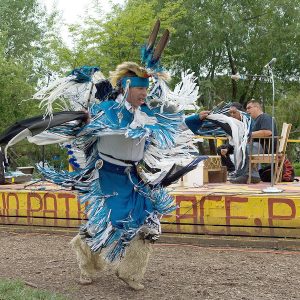
Here’s the lineup, with speakers interspersed:
NOON All Nations Drummers
12:30 Yukon Hannibal
12:50 Soul
1:10 Occupella
1:30 Max Ventura
1:45 Driftwood Dave and the Drifftones
2:20 Open Mike
2:35 Michael Delacour
– Park History
2:45 Funky Nixons
3:25 Other Speakers
3:40 The Diva Band
4:20 Isaiah McLane and Friends
4:50 Eddie Monroe as Trump
5:15 Skank Bank
This is one of the biggest events of the year at People’s Park, with a great lineup of music, dance and speakers. Come and participate!
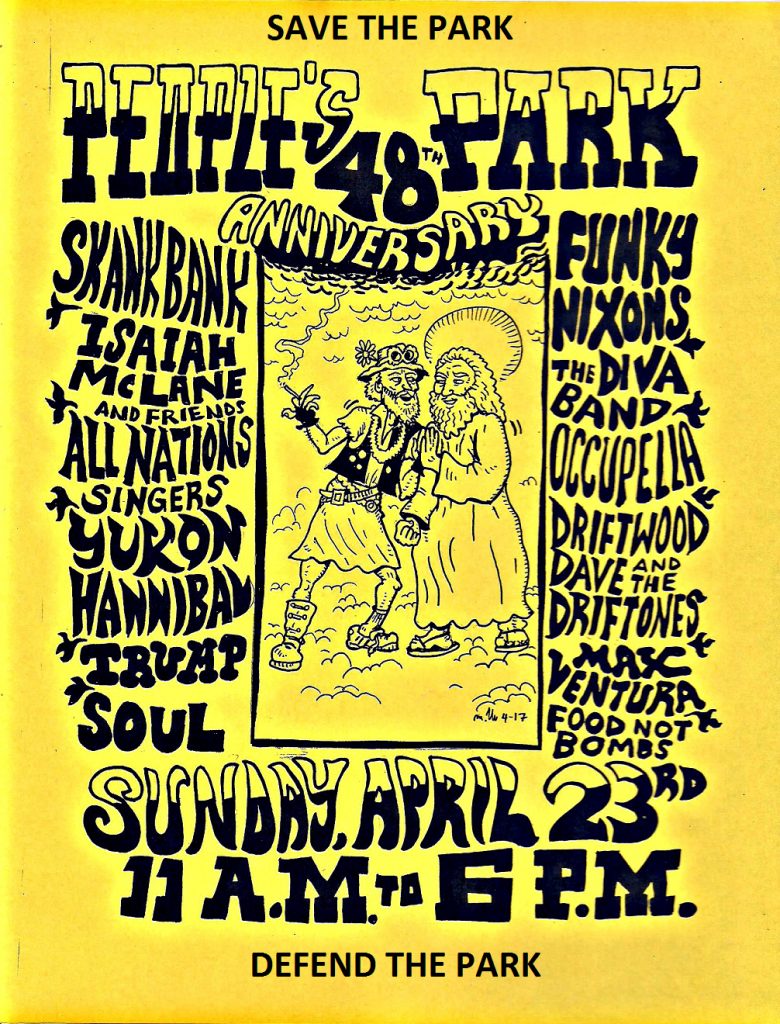
Letter from Michael Delacour
People’s Park 48th Anniversary
48 years ago US imperialism-colonialism was in an all-time crisis. Here in Berkeley there were 3rd world and worker strikes plus ongoing anti-Vietnam war mobilizations. 60% of the windows on UC campus were broken and replaced by plywood. Starting in the summer of 1969 the community was unable to have antiwar events at Provo Park (now Martin Luther King Jr. Park) which have taken place in the past years. The community decided to have antiwar events and make a park on a piece of land where the university has been destroying 53 red shingles homes to build dormitory’s for their students. The beat-niks lived there in the 50’s.
48 years ago was somewhat the same as it is now globally. In Vietnam the US military had a tremendous defeat in 1968. President Johnson had withdrawn from the presidential race and Nixon was elected with a program of slaughter by bombing in North Vietnam and Cambodia. There was tremendous violence by the police toward anti-Vietnam war mobilizations.
Then on April 20th, 1969 where community members came on the land which is now People’s Park and started a free speech park garden. It caught on. It was the big event of the bay area. Thousands of people showed up on the weekend. Loads and loads of sod (grass) were brought from the California Valley for instant grass. The problem was that Reagan was governor and he had presidential aspirations with the help of UC, FBI and CIA.
Reagan along with Sheriff Madigan, Oakland district attorney Edward Meese and Berkeley Mayor Johnson met and to pull off a covert action that got Reagan elected. After about four weeks of our holding anti-war events and growing plants and grass, UC decided to fenced the park. That happened on May 15th 1969 early in the morning. Around 12 noon 5000 students and community people gathered and rallied on Sproul steps. They marched down to confront the police and fence makers of the park.
At Telegraph and Haste young community members turned on the fire hydrant which was a normal action of the past. The Alameda Sheriffs were prepared with a wrench to turn the fire hydrant off. The sheriffs and the people around them on the corner at the fire hydrant were pelted by objects from some people in the crowd from across the street.
That confrontation gave the sheriffs an excuse to march down one block away to their vehicles and pick up there shotguns with bird shot and then they started firing on everyone they saw on the street and on top of the buildings. When they ran out of bird shot they turned to buck shots. Buck shots are big enough to kill. There were 150 people that were wounded. One was blinded and one died three days later; his name was James Rector.
Those shooting events gave Mayor Johnson an excuse to call an emergency marshal law and in turn Reagan activated the national guard. It was found out later that the national guard members from Sacramento had been notified in advance before the May 15th confrontation.
So Reagan activated the National Guard and 2500 soldiers came
in and occupied the park, downtown and the Berkeley 21 days. The Berkeley community fought the national guard in peaceful ways. On May 2nd, a mass of 421 of us were arrested and brutalized by the sheriffs out at Santa Rita Jail. Overall, over 3000 were arrested.
Finally after many days of struggle the business community saw there were no business at all in Berkeley because of the police and all of the community were downtown boycotting the businesses. The city stopped the state of emergency.
Reagan and the CIA brought in hard drugs into the south campus area. Starting with the China White and Persian dust. Young people thought it was cocaine and were easily hooked. They were called the Red Rockets and a book by the name of Rag Theater was published where hundreds of them hanged out on Telegraph avenue. They were the children or offspring of the academic antiwar movement. About half of them in the hundreds have died from that drug intervention by the CIA. It disabled the antiwar movement internationally. The closing of Caffé Mediterraneum here in November, 2016 is part of that CIA project.
Another very important condition that before 1969 or People’s Park young black males could not venture passed Grove street which is now MLK without being molested by the Berkeley police. Berkeley was a sun down town. The park stopped that “Jim Crow” repression.
People’s Park came months after Jackson State where four black-students were killed. Then after People’s Park shootings, killings and repression, six Kent State students were killed on May 1st 1970.
The fence stood up for two and a half years and was attacked hundreds of times by the community. One Christmas 1972 season Nixon and Kissinger ordered a bombing of Hanoi and Haiphong and about 500 Berkeley citizens marched around town boycotting GM cars dealers and found there were no police guarding the fence at People’s Park and in turn went down and tore down the fence — all 500 hundred of them. It’s amazing what you can do with numbers.
On the negative side Reagan used all of this repression against the students and antiwar activists and got elected and was responsible for millions of deaths. And Meese carried on his repression against my kids.
Thank you, Michael Delacour
